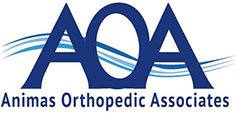Services
-
Hand & Wrist
-
Elbow
-
Shoulder
-
Knee
-
Hip
-
Foot & Ankle
-
Integrative Pain Management
-
Regenerative Medicine
-
Rehabilitation
Pre-surgical rehabilitation or “prehab” is a preparative exercise program prior to surgery that helps improve overall surgical outcomes. It helps with post-surgical pain management, minimizing the hospital stay and decreasing complications associated with surgery. Prehab is common and necessary for orthopedic patients undergoing joint replacement procedures.
-
Sports Medicine
Sports Medicine, also known as sports and exercise medicine (SEM), is a branch of medicine that deals with the treatment and prevention of sports and exercise-related injuries and improving fitness and performance. The main objective of sports medicine is to help individuals engage in sports and exercise in a safe and effective manner to accomplish their training goals.
-
MAKO® Precision Joint Surgery
We understand that making sure you know what to expect from your joint replacement experience is important to you. As you are reading through this material, if you have additional questions please reach out to us to discuss.










